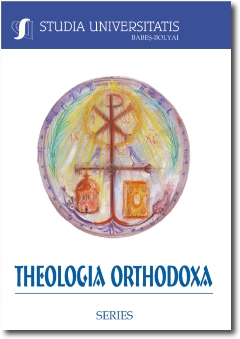ASPECTE FUNDAMENTALE ALE ECLESIOLOGIEI ORTODOXE LA SF. PĂRINTI CAPADOCIENI
FUNDAMENTAL ASPECTS OF ORTHODOX ECCLESIOLOGY AT THE CHAPADOCIAN FATHERS
Author(s): Dacian But-CăpuşanSubject(s): Christian Theology and Religion
Published by: Studia Universitatis Babes-Bolyai
Keywords: Church; mystical Body; communion; Ordination; apostolic succession; catholicity; infallibility.
Summary/Abstract: Fundamental Aspects of Orthodox Ecclesiology at the Chapadocian Fathers. We will stop on the ecclesiologic concept of the three major Chapadocians: St. Basil the Great, St. Gregory of Nazianz and Saint Gregory of Nyssa In their works are exhibited problems triadology, christology even pneumatology, Church discipline, liturgical life, but they fall in the struggle to preserve Church’s unity. The Church existed before the creation of the seen world in the eternal God paradigms, united with the preexisting Christ. The seen and unseen Church is a single body, with identity between them. Only the Church as a whole, clergy and believers as mystical body of Christ is infallible. Church, sacramental representation or kingdom of God, is the organ of preservation, interpretation and fructification of the content of divine Revelation, which is included in St. Scripture and St. Tradition. Sacramental priesthood is inherent, indispensable for the Church. The Episcopate in its entirety constitutes the highest expression of Church unity. It is also illustrated, in the works of the Chapadocian Fathers, the special sacramental status of the highest rungs of the priesthood (bishop) and the importance of apostolic succession. The basis for the universality and ethnicity of the Church is the event of Pentecost. Both the Church entirely, and each local Church is the true Church of Christ, is catholic. As a conclusion, the Church, organ of holiness and salvation, has an exceptional significance in the work of renewal of man and can not be substituted by anything.
Journal: Studia Universitatis Babes-Bolyai - Theologia Orthodoxa
- Issue Year: LIV/2009
- Issue No: 2
- Page Range: 103-114
- Page Count: 12
- Language: Romanian

